Intro:Being the Captain of an airship is one of the most demanding aspects of the game. The roll of Captain requires three distinct skills: Tactics, Leadership, and Piloting. Of these Piloting is the only one with hard and fast rules, and thus is the only one I feel I can legitimately write a guide on. If you are new to Guns of Icarus (GOI) I strongly suggest playing one of the other rolls, preferably engineer. Even if you have your heart set on captaining, gaining a proficiency in damage control and shooting will help you make decisions when it is you at the helm. Also observing good captains in action will teach you far more than this guide ever will.
The basics of Piloting an Airship:First and fore most
YOUR AIRSHIP IS NOT A CAR. Many new players try to adapt driving game logic thinking this is one big floating drive by. While the controls might be the same (forward, back, turn left, turn right), the way they respond is vastly different.
All ships in GOI turn via engine thrust. Regardless of what the ship model looks like, your ship your ship does not use a rudder to turn. This means unlike a car or boat your vehicle doesn't have to be moving forward in order to turn. Like wise your steering does not get reversed when you move backward. You will turn fastest when your throttle is set at neutral since your turning engines can work in opposite directions to generate the most torque.
The physics in GOI take into account properties like thrust, momentum, drag, angular momentum, and torque. Unlike a car that can take advantage of surface friction to start, stop, and turn, your airship will be at the mercy of Newton's first law to a much greater extent. As a pilot you can do two things to cope with your ship's momentum.
First plan ahead, start turning, slowing down, or accelerating well before you need to be executing that action if the response were instantaneous. This will give your ship a chance to be at (or close to) the desired momentum when the time is right.
Second apply counter torque/thrust. when approaching a point where you want to stop turning or moving. This will help cancel out the movement much faster than leaving it to friction. Be warned this takes a little practice and you may end up fishtailing your first few attempts.
You Jobs as Pilot:You actually have two jobs as pilot that often conflict: Keep your ship from taking too much damage, and giving your shooters every opportunity to damage the enemy ships . Depending on the speed and armor of the ship you are flying you may have to sacrifice one to achieve the other.
Defense:There are many ways of avoiding getting shot the simplest of which is to stay our of your opponent's gun range. Many "Sniper Ships" spend their whole game flying backward trying to keep out of the range of their opponents. Unfortunately your ship flies slower in reverse than it does forwards so this strategy doesn't always work.
Each ship in GOI has a blind side. By examining the ship schematics or riding in them it will become pretty clear that there is always one direction that doesn't have any guns menacing it. If you manage to park your ship in the enemy ship's blind side you will be safe from their guns at any range.
Another way to stay out of trouble is to move above or below the enemy ship. Each gun has a vertical angle limit and once your ship is above or below it there is no way the enemy's guns can hit you. Depending on the type of gun you are using and the type of gun your opponent is using it is possible to be inside your vertical limit while outside of theirs.
The Final way to prevent doom from befalling your ship is to use cover. There are two types of cover: soft cover and hard cover. Soft cover is something that obscures your location but is not solid enough to stop a bullet that is shot in your direction. Hard cover is something that will stop a bullet shot in your direction. For our purposes clouds are soft cover an everything else (rocks, wreckage, steel pipes, other airships) is hard cover. Take note when using softcover of the eye at the top left of your screen if it is open, it means the enemy still knows where you are. The moment the eye closes the enemy can still guess at your position so it is advisable to change direction or altitude the moment you "shake the spot."
Offense:The second part of the pilot's job it to position the ship so that the gunners can damage the other ship. Some gunners can put their shots on target regardless what the ship they are on is doing. However such exceptional gunners are few and far between. So as a pilot you need to fly in a way that provides the best platform for your gunners.
First you need to know the turning limits and effective ranges of all the weapons. This knowledge is best gained through gunning for other captains or many hours on the practice range. Once you know the limits of the guns you need to to put the enemy within those limits either by turning the ship or driving closer.
Be aware effective range is different from maximum range. Just because a bullet can reach the enemy doesn't mean it will hit the enemy. Many guns in GOI have a aim giggle that reduce the distance you can expect a gunner to make reliable shots. In game experience as a gunner is the best way to gain familiarity with the effective range of each gun.
It is a little disorienting to keep track of firing angles when you are no longer viewing the world from the gun's perspective. A trick that helps is to slowly turn a gun on target and make note of what part of the ship's superstructure is overlapping the enemy when your gunner starts shooting (and making hits).
You should also be aware that the ship's velocity is added to the bullet's velocity. This is not an issue when flying towards or away from a target but when employing side guns the bullet will bend in the direction of of your ship's travel. A good gunner will make note of the dust passing in front of them and adjust their shot accordingly. A less than observant gunner will need to be told to adjust their aim to compensate for your ship's forward or backward momentum.
The best thing to do when employing side guns at a range where hitting becomes difficult is to put the ship at a dead stop and give your gunners one less thing to worry about. While stationary it is still possible to dodge up and down however this too will impart momentum to the bullet. The amount of leading to shoot a moving target from a stationary target is the same as the ammount of leading to shoot a stationary target from a moving target. However the stationary ship's gunners will have an advantage since they can use the background as a reference to plan their shots. The moving ship's gunners have to do this by trial and error, or dead reckoning.
The rate at which a ship turns is also translated to the bullets (this might be a bug that will be fixed in a later patch). Let your gunners know which way you are turning and do so in a smooth manner. Fishtailing is the worst thing you can do if you want your gunners to shoot strait. For weapons that have a long reload period (like the hwacha) instruct your gunners to hold fire until after you have stopped turning. This will prevent wasted shots and periods of vulnerability.
Pilot Items:Hydrogen Canister: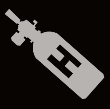
Many pilots use/abuse Hydrogen as a get out of death free card. The sudden burst of vertical movement can get a ship out of the path of slow moving projectiles at long range, and completely out of an enemy's fire arc at close range. If left on for too long it will completely destroy your balloon, but since you are at a high altitude when this happens you are fairly safe.
Since the effects of this captain item lingers for 5 seconds it is best to turn it on for 1 second and let the residue take you out of range. A 1 second burst of hydrogen + 5 seconds of residue can move your ship 5ship lengths vertically. It is by far the best way to create a sudden change in your ship's direction.
Captains are advised to hit the Hydrogen the moment before their hull goes red. This will allow your engineer time to bring it back up before the enemy guns have a chance to inflict permanent damage. Be aware if you are facing a skilled opponent they will attempt to match your hydrogen maneuver and you many not escape.
Hydrogen augments your up down thrust. If you hold the "go up button" (default W) while hydrogen is active you will go up much faster than if you are neutral. Like wise you can hold the "go down button" (default S) to slow down your ascent if you don't want to go up as fast.
There are many tricks a clever pilot can pull with hydrogen but by far the most devastating is called the "Hydrogen Uppercut." By positioning your ship under an enemy ship and using hydrogen to suddenly rise into the target ship you will deliver a great deal of ramming damage. In addition since Hydrogen lingers for 5 seconds you can switch to impact bumpers before impact. Also your ship will take the impact damage to the balloon instead of the hull giving you an extra health buffer on top of ship armor and hull health.
Edit: In the latest patch 1.2.0 the mass of the ship has been factored into the lift acceleration Hydrogen provides. Heavy ships like the Galleon and Pyramidion will no longer be able to move on the vertical direction with this item as swiftly as they did in previous patches.
Chute Vent: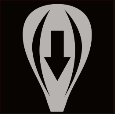
The Chute vent is the riskier cousin of Hydrogen. Like hydrogen it can be used to rapidly change your vertical position to get out of danger. It also has a 5 second linger time. Unlike hydrogen it moves the ship down as it damages the balloon. This puts the ship in the dangerous position of being close to the ground with a damaged balloon. Thus this item is less popular than Hydrogen with captains.
This unpopularity can be useful. Most skilled pilots can match a Hydrogen escape, but few carry the right equipment to match a chute vent escape. Also when a ship is at the top of the map a Hydrogen escape becomes impossible.
Trying to use Chute Vent to assist in a ram is a very risky technique, The enemy ship's balloon will buffer the damage it takes, and if you miss it is very likely you will crash into the ground.
Edit: In the latest patch 1.2.0 the mass of the ship has been factored into the drop acceleration Chute Vent provides. Heavy ships like the Galleon and Pyramidion will no longer be able to move on the vertical direction with this item as swiftly as they did in previous patches.
Drogue Chute: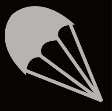
The Drogue Chute slows down your ship's ascent/decent and is popular amongst pilots who face ships armed with balloon destroying guns. The Drogue Chute will not prevent a ship from crashing when the balloon is destroyed but it does slow down the process enough that the defending ship can scare off/kill the opponent that is popping the balloon.
If you ever get into a situation where you must deploy a Drogue Chute your first priority is to get as many guns you can shooting the enemy that is popping your balloon. Staying alive a little longer is meaningless if you don't fight back.
Impact Bumpers:
Impact Bumpers reduce the amount of impact damage your ship sustains from collisions with other ships, the scenery, or the ground. This tool activates instantaneously, and reduces engine output, so if you want to get the best out of your ramming, deploy this tool at the very last second.
This tool can also be used to reduce ground impact damage for when your balloon is destroyed. or if you accidentally fly into a stationary object. New pilots are encouraged to take this tool as it does not harm their ship and will in fact protect their ship should they mistime a maneuver.
Kerosene: 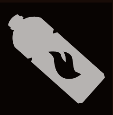
Kerosene increases engine output at the cost of slow damage to the engines. It will allow a ship to get into or out of a fight faster than other ships of the same class. (your spire still won't out run a squid). The damage from Kerosene is slow enough one engineer should be able to keep your engines up provided nothing else damages the ship.
Be aware damaged engines even with kerosene preform worse than undamaged engines. Only when your engines are at top condition will you get the best out of this item. So turn this item off if you see your engines dip lower than 1/2 way.
Some engineers don't pay attention to the engines when the ship is not under fire. It is considered polite to warn the engineers that you will be damaging the engines for increased speed. The community slang for this is "Juicing Engines."
Moonshine: (the Juice)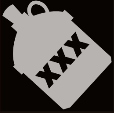
Moonshine is a more powerful version of Kerosene. Its speed boost is greater, but so it the damage to the engines. The rate at which Moonshine damages your engines is greater than an engineer can repair them. Unlike Kerosene a if pilot can leaves Moonshine on for long periods of time the engines will break. Thus it is only useful for short bursts.
Moonshine is used tactically in the same way Kerosene is to get into and out of trouble faster than your ship would normally allow. Like wise it is polite to tell your engineers that you will be using Moonshine to "Juice" or "Shine" the engines.
Moonshine also has the property of increasing your angular drag (slows turning to a near stop). While piloting with moon shine remember to switch it off before making a turn and back on again after the turn has been made. A clever pilot can also use moonshine to stop a turn faster than applying counter torque. This is useful when trying to line up a field gun mounted on a squid (which has a tendency to over turn), or to stabilize your ship before a Hwacha volley.
A secondary use for moonshine, discovered by dragonmere, is to prevent ramming torque. Any ram that is not inline with the center of mass of the ship will spin the ship away from the ram. However if moonshine is on when this happens the spinning effect will be greatly lessened on account of the high angular drag. Read more about it here:
https://gunsoficarus.com/community/forum/index.php/topic,1056.0.html#msg17422Phoenix Claw: (chicken foot)
Phoenix Claw increases turning speed while damaging the engines. It is useful in situations where the enemy ship is on your blind side. Captains of ships with slow turning rates such as the Galleon and Junker are encouraged to take Phoenix claw to compensate for their ships deficiency. When facing a highly maneuverable ship like the squid phoenix claw becomes a necessity.
As with Kerosene and Moonshine it is polite to inform your engineers you are using an item that damages the ship. My favorite slang for this is "chicken footing".
Spyglass: 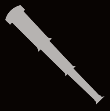
The spy glass can be used while not on the helm to spot ships. The crew of a ship can usually be trusted to carry this item, thus freeing the pilot to bring other tools. If you are stuck on a ship with AI or unresponsive crew members, the pilot may have to take the spyglass.
The spy glass puts a while box around an enemy ship for your entire team. The white box will persist so long as one friendly ship has line of site on the enemy ship. Also the enemy ship will show up on the map, thus making it easier to keep track of an opponent who is above or below you.
The importance of putting a spyglass mark on an enemy can not be overstated. An entire guide could probably be written on how to use the spyglass marks system to your advantage. For now put the mark on your enemies or encourage your crew to do so as often as possible
Tar Barrel: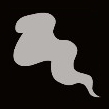
Tar Barrel releases a cloud behind the player's ship that does two things. It damages any ship (friend or foe) that flies through it, and it blocks line of sight loosing spyglass mark. Using this item damages the engines at a slower rate to Kerosene. Unlike Kerosene this item does not increase speed, so it is most useful for retreating as it slows down any pursuers and damages their guns.
The Tar is ejected out of the rear of the ship and will cause damage to whatever flies through it. Even the ship that emitted it, so moving backward while emitting tar is highly discouraged. Use tar when trying to avoid a 2v1 encounter or if an enemy ship approaches from behind, it is almost as good as having a rear mounted close range shatter damage weapon.
For more aggressive pilots tar can be use in any situation where you have an idea where the enemy ship will be in the near future. For example if an enemy ship is moving towards you attempting to ram, dodge while dropping tar will make them regret their maneuver. Likewise at the opening of a multi ship engagement having one ship run across the enemy’s line of advance while dropping tar will put his entire team in an advantageous position if the tarring ship manages to catch one or two enemies in the smoke. Against slower/stationary ships it is possible to sneak up close turn around and dump tar smoke directly on the target.
Ships:This section will discuss each ship and specific strategies that they can employ. This section will be added at a later date.
Beginner pilots are encouraged to fly the Goldfish or Pyramidion. These ships have decent turning speed, movement speed, and armor. Most importantly they both have forward facing guns which will lessen the lateral shooting issue discussed earlier. Also having forward facing guns will allow you to approach/retreat from an enemy while keeping guns trained on them.
Tips:There are hundreds of little things a pilot can do to enhance their chances of winning. As a new pilot there are a few important things to keep in mind that I have not already covered:
Stick close to your teammate, being able to put two ships worth of guns on an opponent will do more to secure victory than any amount of fancy flying.
Use reverse thrust when you are too close to the enemy. Overshooting (flying past) your target will deprive your gunners of a good shot and may give the enemy enough time unmolested to kill you.
Remember you have the vertical axis to play with. Going up or down costs you nothing speed wise, and can often be used to gain a tactical advantage on an enemy.
Only ram an enemy ship when their hull armor is down and yours is not. Ramming damages both ships equally so it only makes sense when the damage is permanent to them and repairable for you.